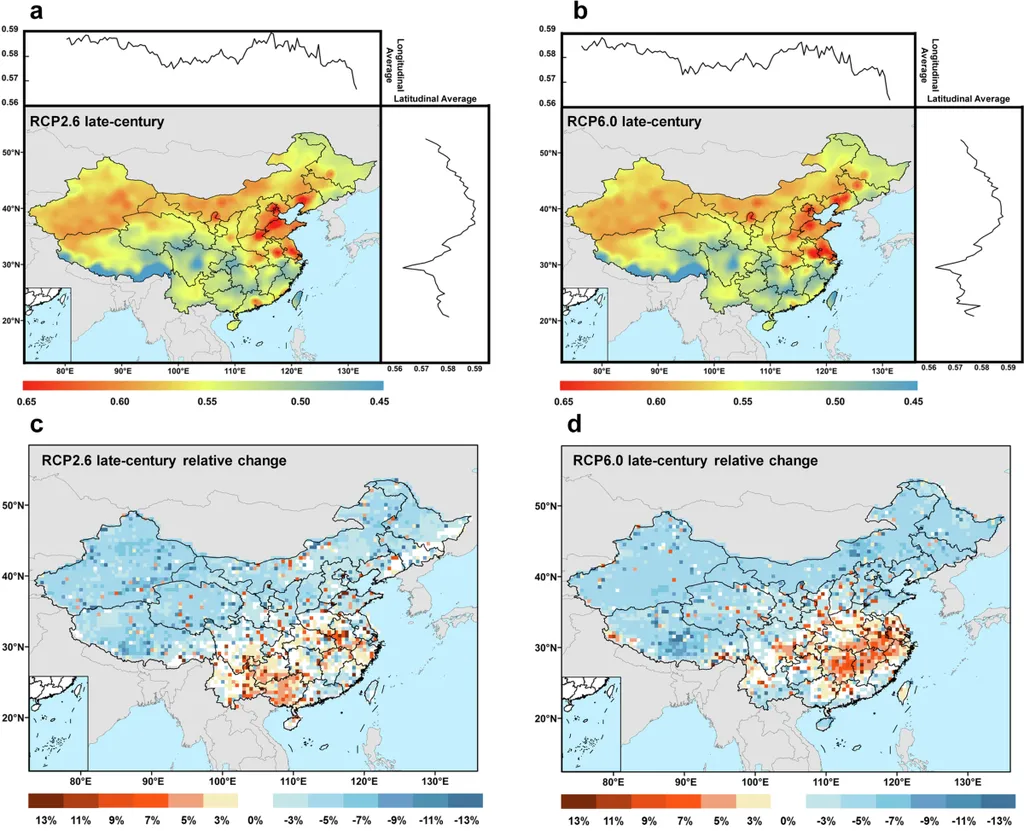In the heart of China’s agricultural landscape, a critical study led by Rong Tang from the College of Water Resource and Civil Engineering at Hunan Agricultural University is shedding new light on the spatiotemporal patterns of water disasters and their impact on key crops. Published in the journal *Agricultural Water Management* (which translates to *Irrigation and Drainage Management* in English), this research is poised to influence precision agriculture and disaster mitigation strategies in major grain-producing regions.
The study, which focuses on the Middle-and-lower Yangtze River Region (MLRYR), introduces five hydrometeorological indicators to assess drought and flooding patterns: the Standardized Precipitation Index (SPI), Standardized Precipitation Evapotranspiration Index (SPEI), Precipitation anomaly (PA), China-Z Index (CZI), and Standardized antecedent precipitation evapotranspiration index (SAPEI). These indicators are crucial for understanding the temporal trends and spatial distribution of water disasters, which are increasingly exacerbated by climate change.
“Our findings reveal that the temporal trends of both drought and flooding are mostly increasing, with significant trends of drought being much greater than those of flooding,” Tang explains. The study found that the SPI detected the most significant trends of both drought and flooding, but the consistency ratios among the indicators were surprisingly low—just 29.6% for drought and 41.7% for flooding. This inconsistency highlights the complexity of water disaster patterns and the need for a multi-indicator approach.
The spatial analysis showed a distinct moving direction: heavy drought areas are shifting from south to north, while heavy flooding areas are moving from north to northeastern. The eastern MLRYR is particularly vulnerable, experiencing both heavy drought and flooding. The study also identified high-risk areas for two critical crops: cotton and rapeseed. Rapeseed, in particular, faces higher drought and flooding risks, concentrated in the western provinces.
“Compared with cotton, rapeseed suffered much higher drought and flooding risks, which were concentrated in western provinces,” Tang notes. This insight is crucial for farmers and policymakers, as it provides a clearer picture of where and when water disasters are most likely to occur, enabling more targeted and effective mitigation strategies.
The commercial implications of this research are significant. For the energy sector, understanding the spatial and temporal patterns of water disasters can inform infrastructure planning and investment. For instance, areas prone to frequent flooding may require more robust drainage systems, while drought-prone regions might benefit from water storage solutions. Additionally, the agricultural sector can use this information to optimize crop selection and planting schedules, reducing the risk of crop failure and ensuring food security.
This study not only provides actionable insights for precision agriculture but also underscores the importance of a multi-indicator approach in assessing water disasters. As climate change continues to exacerbate these events, such research will be invaluable in developing resilient agricultural practices and infrastructure.
In the words of Tang, “This methodology provides actionable insights for precision agriculture and targeted disaster mitigation strategies in major grain-producing regions.” With this research, the path forward for sustainable and resilient agriculture becomes a little clearer, offering hope for farmers and communities in the face of an uncertain climate future.

